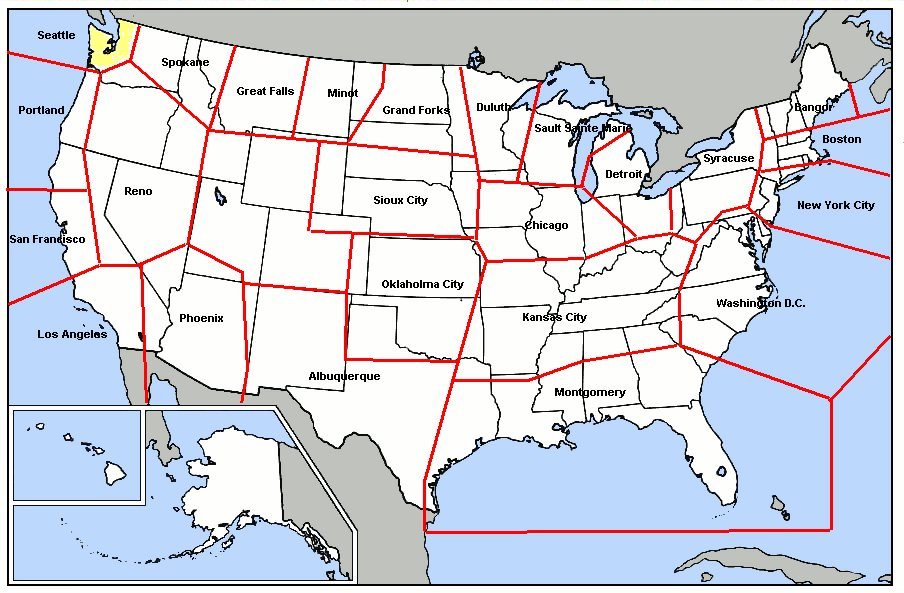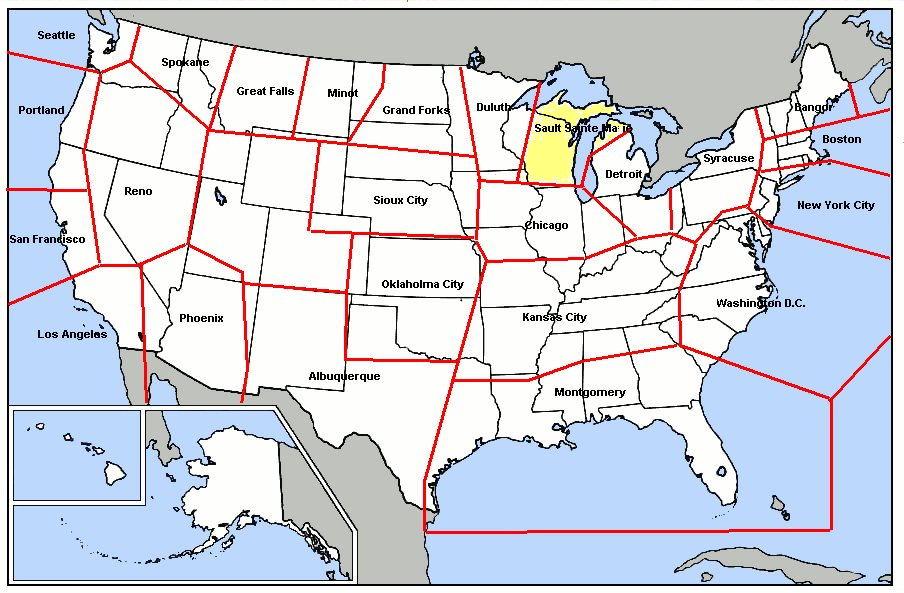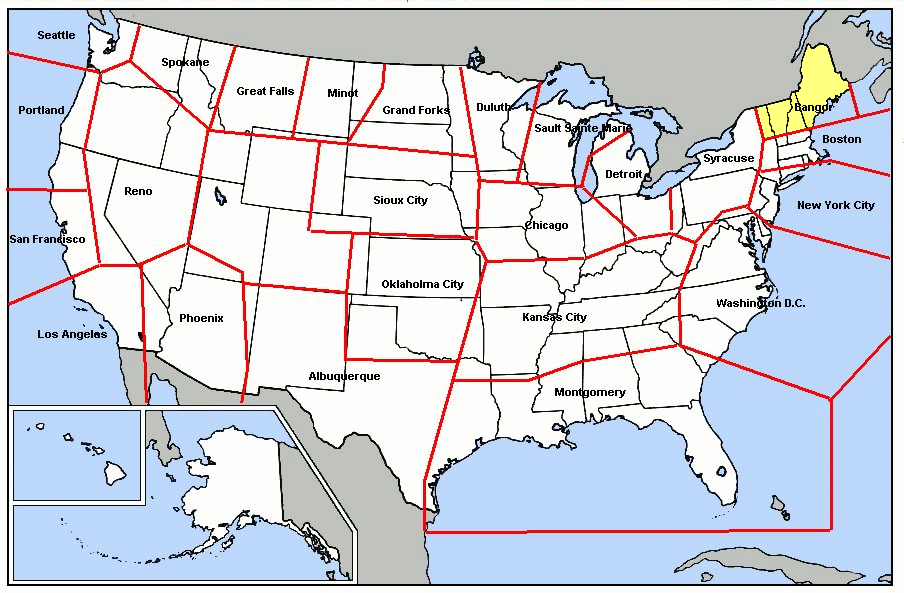|
FSQ-7
The AN/FSQ-7 Combat Direction Central, referred to as the Q7 for short, was a computerized command and control system for Cold War ground-controlled interception used in the USAF Semi-Automatic Ground Environment (SAGE) air defense network. The name “AN/FSQ” derives from ''Army-Navy / Fixed Special eQuipment''. An advancement of the pioneering MIT Whirlwind II digital computer design, and manufactured by IBM as prime contractor, the AN/FSQ-7 was the largest discrete computer system ever built. Each of the 24 installed machines weighed 250 tons. The AN/FSQ-7 used a total of 60,000 vacuum tubes (49,000 in the computers) and up to 3 megawatts of electricity, performing about 75,000 instructions per second for networking regional radars. Primary functions Installations in the USAF Semi-Automatic Ground Environment (SAGE) air defense network were configured as duplex systems, using a pair of AN/FSQ-7 computers to provide fault tolerance. One was active at any time, the other ... [...More Info...] [...Related Items...] OR: [Wikipedia] [Google] [Baidu] |
Semi-Automatic Ground Environment
The Semi-Automatic Ground Environment (SAGE) was a system of large computers and associated networking equipment that coordinated data from many radar sites and processed it to produce a single unified image of the airspace over a wide area. SAGE directed and controlled the NORAD response to a possible Soviet air attack, operating in this role from the late 1950s into the 1980s. Its enormous computers and huge displays remain a part of cold war lore, and after decommissioning were common props in movies such as '' Dr. Strangelove'' and ''Colossus'', and on science fiction TV series such as '' The Time Tunnel''. The processing power behind SAGE was supplied by the largest discrete component-based computer ever built, the IBM-manufactured AN/FSQ-7. Each SAGE Direction Center (DC) housed an FSQ-7 which occupied an entire floor, approximately not including supporting equipment. The FSQ-7 was actually two computers, "A" side and "B" side. Computer processing was switched from "A ... [...More Info...] [...Related Items...] OR: [Wikipedia] [Google] [Baidu] |
Duluth Air Defense Sector
The Duluth Air Defense Sector (DUADS) is an inactive United States Air Force organization. Its last assignment was with the Air Defense Command 29th Air Division, being stationed at Duluth Airport, Minnesota. It was inactivated on 1 April 1969. History Established in October 1957 assuming control of former ADC Central Air Defense Force units with a mission to provide air defense of most of Minnesota and western Wisconsin. The organization provided command and control over several aircraft and radar squadrons. In November 1959, the new Semi Automatic Ground Environment (SAGE) Direction Center (DC-10) became operational. DC-10 was equipped with dual AN/FSQ-7 Computers. The day-to-day operations of the command was to train and maintain tactical flying units flying jet interceptor aircraft (F-94 Starfire; F-102 Delta Dagger; F-106 Delta Dart) in a state of readiness with training missions and series of exercises with SAC and other units simulating interceptions of incoming e ... [...More Info...] [...Related Items...] OR: [Wikipedia] [Google] [Baidu] |
San Francisco Air Defense Sector
The San Francisco Air Defense Sector (SFADS) is an inactive United States Air Force organization. Its last assignment was with the 28th Air Division, being stationed at Beale Air Force Base, California. The sector was established in February 1959 assuming control of former ADC Western Air Defense Force units in California west of the Sierra Nevada; north of Santa Barbara and south of Eureka. The organization controlled several aircraft and radar squadrons. On 1 December 1960 the new Semi Automatic Ground Environment (SAGE) Direction Center (DC-18) became operational. DC-18 was equipped with dual AN/FSQ-7 Computers. The day-to-day operations of the command was to train and maintain tactical flying units flying jet interceptor aircraft ( F-94 Starfire; F-102 Delta Dagger; F-106 Delta Dart); (2 F-101B Voodoo Squadrons) in a state of readiness with training missions and series of exercises with SAC and other units simulating interceptions of incoming enemy aircraft. The ... [...More Info...] [...Related Items...] OR: [Wikipedia] [Google] [Baidu] |
Sault Sainte Marie Air Defense Sector
The Sault Sainte Marie Air Defense Sector (SsmADS) is an inactive United States Air Force organization. Its last assignment was with the 30th Air Division, being stationed at K.I. Sawyer Air Force Base, Michigan. History SsmADS was established in November 1958 assuming control of former ADC Central Air Defense Force units in Wisconsin and the Upper Peninsula of Michigan. The organization provided command and control over several aircraft and radar squadrons. On 15 June 1960, the new Semi Automatic Ground Environment (SAGE) Direction Center (DC-14) became operational. DC-14 was equipped with dual AN/FSQ-7 Computers. The day-to-day operations of the command was to train and maintain tactical flying units flying jet interceptor aircraft (F-94 Starfire; F-102 Delta Dagger; F-106 Delta Dart) in a state of readiness with training missions and series of exercises with SAC and other units simulating interceptions of incoming enemy aircraft. The Sector was inactivated on 1 A ... [...More Info...] [...Related Items...] OR: [Wikipedia] [Google] [Baidu] |
Detroit Air Defense Sector
The Detroit Air Defense Sector (DEADS) is an inactive United States Air Force organization. Its last assignment was with the Air Defense Command (ADC) 26th Air Division at Custer Air Force Station (AFS), Michigan. It was inactivated on 1 April 1966. History DEADS was originally designated as the 4627th Air Defense Wing, but was redesignated before being organized in January 1957 at Custer AFS, Michigan. It became operational in September 1958, but did not assume control of former ADC Central Air Defense Force units with a mission to provide air defense of lower Michigan, northeast Indiana, and most of Ohio until 1959. The organization provided command and control over several aircraft, missile and radar squadrons. On 1 September 1959 the new Semi Automatic Ground Environment (SAGE) Direction Center (DC-06) and Combat Center (CC-01) became operational. DC-06 was equipped with dual AN/FSQ-7 Computers. The day-to-day operations of the command were to train and maintain ... [...More Info...] [...Related Items...] OR: [Wikipedia] [Google] [Baidu] |
Boston Air Defense Sector
The Boston Air Defense Sector (BADS) is an inactive United States Air Force Air Defense Command (ADC) organization. Its last assignment was with the ADC 26th Air Division at Hancock Field, New York. History BADS was established in 1956 at Stewart Air Force Base (AFB), New York as the 4622nd Air Defense Wing pending completion of the new Semi Automatic Ground Environment (SAGE) Direction Center (DC-02) and Combat Center (CC-04) which became operational 15 September 1958. DC-02 was equipped with dual AN/FSQ-7 Computers. Early in 1957, the wing was redesignated as the Boston Air Defense Sector. The mission of the BADS was to provide air defense over New England initially in an area covering southern Maine, southern New Hampshire, southern Vermont, Massachusetts, northern Rhode Island and Connecticut and part of New York. The day-to-day operations of the command were to train and maintain tactical units flying jet interceptor aircraft (North American F-86 Sabre, Northrop F-8 ... [...More Info...] [...Related Items...] OR: [Wikipedia] [Google] [Baidu] |
Bangor Air Defense Sector
The Bangor Air Defense Sector (BaADS) is an inactive United States Air Force organization. Its last assignment was with the Air Defense Command 26th Air Division, being stationed at Topsham Air Force Station, Maine. It was inactivated on 1 April 1966. History BaADS was established in January 1957 assuming control of former ADC Eastern Air Defense Force units with a mission to provide air defense of Maine and most of Vermont and New Hampshire. The organization provided command and control over several aircraft and radar squadrons. On 1 March 1959 the new Semi Automatic Ground Environment (SAGE) Direction Center (DC-05) became operational. DC-15 was equipped with dual AN/FSQ-7 Computers. The day-to-day operations of the command was to train and maintain tactical flying units flying jet interceptor aircraft (F-94 Starfire; F-102 Delta Dagger; F-106 Delta Dart) in a state of readiness with training missions and series of exercises with SAC and other units simulating inter ... [...More Info...] [...Related Items...] OR: [Wikipedia] [Google] [Baidu] |
Phoenix Air Defense Sector
The Phoenix Air Defense Sector (PhADS) is an inactive United States Air Force organization. Its last assignment was with the Air Defense Command 28th Air Division, being stationed at Luke Air Force Base, Arizona. It was inactivated on 1 April 1966 History PhADS was established in June 1959 assuming control of former ADC Western Air Defense Force units in Arizona; southwestern California; southern Nevada and southwestern Utah. The organization provided command and control over several aircraft and radar squadrons. On 15 June the new Semi Automatic Ground Environment (SAGE) Direction Center (DC-21) became operational. DC-21 was equipped with dual AN/FSQ-7, AN/FSQ-7 Computers. The day-to-day operations of the command was to train and maintain tactical flying units flying jet interceptor aircraft (F-94 Starfire; F-102 Delta Dagger; F-106 Delta Dart) in a state of readiness with training missions and series of exercises with SAC and other units simulating interceptions of i ... [...More Info...] [...Related Items...] OR: [Wikipedia] [Google] [Baidu] |
Gunter Annex
Gunter Annex is a United States Air Force installation located in the North-northeast suburbs of Montgomery, Alabama. The base is named after former Montgomery mayor William Adams Gunter. Until 1992 it was known as Gunter Air Force Base or Gunter Air Force Station. It has been a military training base since its opening in 1940. Gunter Annex is a subordinate installation under the administration of the 42d Air Base Wing at nearby Maxwell Air Force Base. Overview Gunter Annex is the home of the Business and Enterprise Systems (BES) Directorate. The BES provides and supports secure combat information systems and networks for the United States Air Force, the Department of Defense and other Federal Government Agencies. The BES Directorate is a part of the Air Force Life Cycle Management Center (AFLCMC), which is headquartered at Wright-Patterson AFB, Ohio, and its subordinate activity at Hanscom AFB, Massachusetts. The 26th Network Operations Squadron provides network defen ... [...More Info...] [...Related Items...] OR: [Wikipedia] [Google] [Baidu] |
Grand Forks Air Defense Sector
The Grand Forks Air Defense Sector (GFADS) is an inactive United States Air Force organization. Its last assignment was with the Air Defense Command 29th Air Division, being stationed at Grand Forks Air Force Base, North Dakota. It was inactivated on 1 December 1963 History Established in December 1957 assuming control of former ADC Central Air Defense Force units with a mission to provide air defense of most of North Dakota along with western Minnesota and northern South Dakota. The organization provided command and control over several aircraft and radar squadrons. On 15 November 1959, the new Semi Automatic Ground Environment (SAGE) Direction Center (DC-11) became operational. DC-11 was equipped with dual AN/FSQ-7 Computers. The day-to-day operations of the command was to train and maintain tactical flying units flying jet interceptor aircraft ( F-94 Starfire; F-102 Delta Dagger; F-106 Delta Dart) in a state of readiness with training missions and series ... [...More Info...] [...Related Items...] OR: [Wikipedia] [Google] [Baidu] |
Luke Air Force Base
Luke Air Force Base is a United States Air Force base in Maricopa County, Arizona, United States., effective 20 December 2007 It is located west of the central business district of Glendale, and west of Phoenix. Luke AFB is a major training base of the Air Education and Training Command (AETC), training pilots in the F-16 Fighting Falcon. On 31 March 2011 it was announced that the F-35 Lightning II would replace the F-16 as the primary training aircraft at Luke, although the date of deployment of the new aircraft to Luke and reorganization plans were not announced. On 16 July 2013, the Air Force announced that Luke AFB will house a total of 144 F-35A Lightning IIs. It is a designated Superfund site due to a number of soil and groundwater contaminants. History Frank Luke Jr. Luke Air Force Base was named after Second Lieutenant Frank Luke (1897–1918). Lt Luke is a posthumous Medal of Honor recipient and the number two United States flying ace in World War I. Bor ... [...More Info...] [...Related Items...] OR: [Wikipedia] [Google] [Baidu] |
Minot Air Force Base
Minot Air Force Base is a U.S. Air Force installation in Ward County, North Dakota, north of the city of Minot via U.S. Route 83. In the 2020 census, the base was counted as a CDP with a total population of 5,017, down from 5,521 in 2010. Minot AFB is the home of two major wings: the 5th Bomb Wing and 91st Missile Wing, both of the Air Force Global Strike Command (AFGSC). Originally opened in 1957 as an Air Defense Command (ADC) base, Minot AFB became a major Strategic Air Command (SAC) base in the early 1960s, with both nuclear armed intercontinental ballistic missiles and manned bombers and aerial refueling aircraft. When SAC was inactivated in 1992, the nuclear mission of the base was divided between two commands, with missiles going to the Air Force Space Command (AFSPC) and manned bombers to the Air Combat Command (ACC). With the establishment of the Air Force Global Strike Command (AFGSC) in 2009, missiles and manned bombers (excluding the B-1 Lancer) wer ... [...More Info...] [...Related Items...] OR: [Wikipedia] [Google] [Baidu] |










